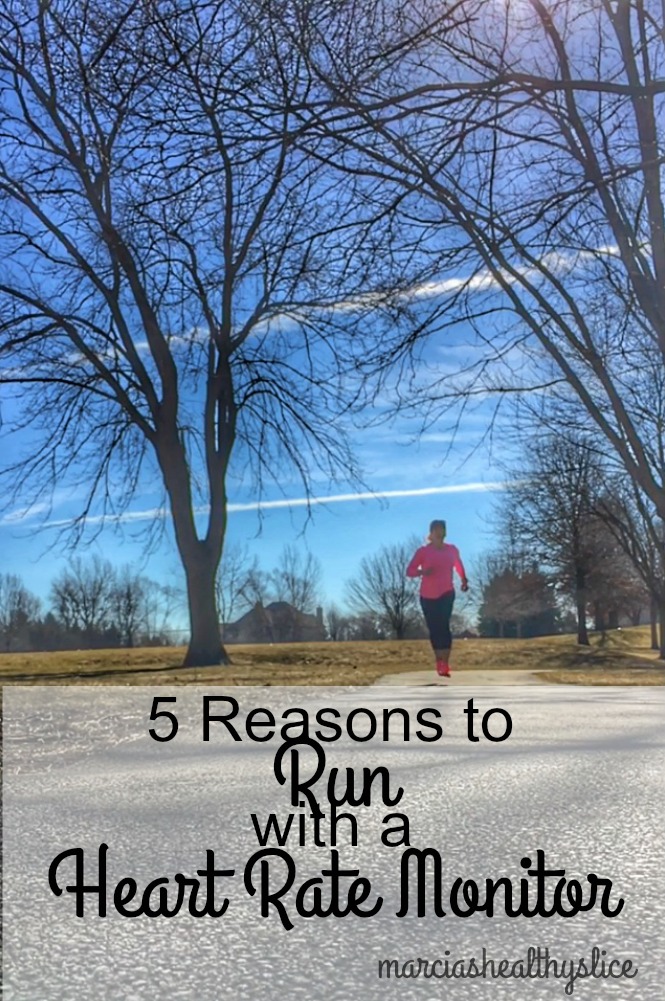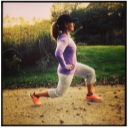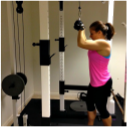It’s no secret that I train some of my athletes using a heart rate monitor, and I’ve certainly used one myself in the past. When I trained for my first triathlon 3 years ago, my coach was all about heart rate and power thresholds so that chest strap and I got pretty cozy together. Before I tell you why I’m back running with my heart rate monitor, let’s review why one can be beneficial:

Teaches you what various intensities feel like. You shouldn’t be doing your long run at 5k pace and vice versa. Determining your heart rate zones and dialing them in during training teaches your body how to work in a variety of ways. Moderate to fast running burns glucose and builds speed while slower running burns fat and builds endurance. A good training plan includes both.
Teaches you how you heart behaves under various conditions. Climate, terrain, hydration, hormones. sleep or lack thereof, all impact heart rate. Wearing a heart rate monitor in summer heat was a game changer for me. It showed me the effect of heat and humidity on my body and what my heart rate does when my body is working hard to cool itself. It hasn’t been the easiest thing ever, but the HRM taught me to trade goal pace for goal heart rate, when conditions are not optimal.
Shows you your progress. Face it running is all about cardiovascular fitness. As you become fitter, faster, and/or build endurance, you’ll notice you’re able to keep a lower heart rate for longer, while your body is running a faster pace. A total confidence builder.
Prevents over-training. Are your recovery days easy enough to allow your body to actually recover? Many times this is not the case. A HRM can help you keep your intensity low when it needs to be so your body is rested and ready to rock harder workouts. Training is all about stressing (breaking down) the body then backing off (recovery) enough to allow the body to replenish and adapt to the demands being put on it.
Teaches you about yourself. Do you have a tendency to go out too fast? Push too hard then die in the later miles? Not give sufficient effort? Always run the same pace? A HRM will give you an objective view of your training nature. For me personally, I’ve learned from heart rate training that it can take my body a couple (or more) miles to actually warmup. Until then my heart rate is high and erratic. Running feels awful. Wearing the monitor helps me start slower and be more patient with the warmup. I know now that my running “groove” is often a few miles down the road.
Why I’m Running with a Heart Rate Monitor
When my body/hormones/metabolism ran off the tracks awhile back, my runs became erratic. One day I’d be able to run at a pace “normal” for me, another day, even a very easy-paced run would feel preposterously difficult. Having to push through those toughies is no fun at all, not to mention the degree to which they shake one’s confidence. On one especially awful run recently, I felt so winded that I stopped and took walk breaks on a couple of occasions. I reviewed my Garmin Connect data afterward and saw this:

Over reaching?! Although it was my intent to run an easy pace, the pace I’d arbitrarily set in my head was clearly too fast for me that day and my heart rate reflected that. Seeing this spelled out explained so much.

Since then I’ve gotten a little better about not trying to push too hard on days my body is not having it. I feel reassured when I see these messages that fitness gains are being made, even though my runs sometimes feel like complete failures. So for me, at this point with my wacky hormones, my heart rate monitor is sort of like a horse whisperer for runners. It helps me cool my jets and cut myself a little slack when I think I’m not working hard “enough”. Because I am.
Do you train with a heart rate monitor? Do you have unexplained “off” days?
 Loading InLinkz ...
Loading InLinkz ...



My watch has a built in heart rate monitor but I never check out the numbers when I am done. Yikes!
Oh so many unexplained off days lately. My apple watch has a HR monitor and I think I’m going to slap it on next to my Garmin to keep an eye on my HR. I did that on my treadmill run and it was really helpful.
I used to wear the chest strap heart rate monitor for my Garmin watch but it just got to be so uncomfortable in the summer. I have the Fitbit Alta HR which has built in heart rate so I guess I could start looking at the data from that, but it wouldn’t tell me if I was overreaching or not. I should probably just go back to the strap lol.
I primarily use the heart rate monitor on my Garmin and I love it for those exact reasons. It’s crazy how some days can feel easy and then other days, doing the same thing, can feel hard. I finally changed my screen so that I can actually see my heart rate when I glance down. Best decision ever! It really helps.
I love my Garmin because it has the HR in the wrist – I haven’t ever had to deal with a chest strap (but I have heard horror stories). I find that using HR during the change of the seasons works well to not push too hard. Summer running is tough, but keeping an eye on my HR helps keep me from pushing too hard.
I think everyone has unexplained off days!
I track my RHR, but I don’t have a HRM or a watch that can track it so I sorta run by feel & sorta run by pace. But I have Rachel to tell me what paces to shoot for — and that’s been so helpful to me!
I have a HR monitor on my watch buy I never pay much attention to it. I should look up that raining effect Garmin Connect to see what it says about my runs. I am sure my watch does so many things I am not familiar with.
My TomTom has the heart rate monitor built in, but I need to get better with the data. What makes me laugh sometimes is when the gym treadmill thinks it’s reading from my watch but is picking up some crazy combo of adjacent watches and will throw like a 190 or something. Um, no.
I did a few runs w a HRM earlier in the spring then kind of gave up. I never really figured out how to use it correctly and where I should be on my runs. I do think it would help me tremendously though as my paces are all over the pace lately
I definitely think a HRM can be helpful. I just don’t feel like my wrist based one is accurate enough. It usually says my HR is higher than it probably is (or jumps around alot). When I first found out I was pregnant I started using my chest strap again with my old Garmin to monitor my heart rate. I found myself so caught up in the numbers that I got frustrated. So after a few weeks I just stopped using it and tried to pay attention to my breathing instead. At some point I would like to give it another try.
For the most part, I have always run by feel.I just have never gotten in to the groove of glancing at my watch constantly to monitor my pace (I know, my bad). That said, when/if I feel like things just are not in sync, I don’t have to look at my watch and see the bad news LOL (glass half full, right?). I have often wondered if HRM training would help me, or give me more to worry/wonder about (?)
Years ago I ran on the treadmill with the chest strap and I hated it. It felt like it restricted my breathing. I can see where it would be helpful. Unfortunately, my Garmin in only 6 months old and doesn’t have a HR monitor.
All good reasons.
I don’t have a heart rate monitor but my Apple Watch does track it. I am just too lazy to look.
All my runs are by feel. And some days, I am tired after running a few feet and others, I can run for miles.
All good reasons – and honestly I’m feeling so out of sync these days I think this is something I really need to consider. My Garmin tracks my heart rate but I’ve barely glanced at it.
How do you know what your target range should be? And, do you think a chest strap gives you a better read than a watch on your wrist?